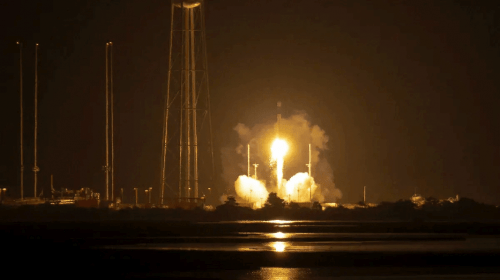Will Lightspeed Redefine Satellite Internet Competition?
Dec 20, 2024
Telesat announced that its Lightspeed constellation had successfully completed an early design review, marking a pivotal milestone in the Canadian geostationary operator’s strategic push to challenge established players in the low Earth orbit (LEO) broadband market. Given the fact that the space-based internet market is gradually becoming saturated, this development shows that Telesat means business.
 A Telesat Lightspeed satellite concept, featuring MDA’s software-defined platform. Credit: Telesat
A Telesat Lightspeed satellite concept, featuring MDA’s software-defined platform. Credit: Telesat
The preliminary design review has confirmed that the spacecraft design, which incorporates Canada-based MDA Space’s cutting-edge reprogrammable Aurora platform, aligns perfectly with the program’s functional and performance requirements. This validation demonstrates a major development toward realizing Telesat’s grand strategy of entering the LEO broadband market. Transitioning into a heavier engineering focus, the project is now in the process of progressing towards the crucial design review, which will decide if the 750-kilogram spacecraft is ready for production. Telesat has arranged 14 launches that are expected to start from mid-2026 and will launch all of its Lightspeed satellites within a single year, indicating the company’s strategy of a fast market penetration.
The manufacturing infrastructure is also being developed, with MDA starting construction of a new high volume manufacturing facility in Quebec, Canada. The potential of this facility to manufacture two satellites per day demonstrates that Telesat has grand industrial plans for the LEO market. In addition to the Telesat project, MDA has experience that it has accumulated in the satellite business. The company has recently won another contract of 180 million Canadian dollars (approximately $131 million USD) for preliminary engineering of a non-geostationary constellation of 36 satellites for an unknown client. This contract could potentially increase approximately four-fold if MDA is awarded the prime contractor for the constellation in the subsequent year.
The Lightspeed constellation’s technical specifications reveal its competitive positioning, with a planned capacity of approximately 10 terabits per second (Tbps). This substantial capacity targets various market segments, including backhaul services for mobile network operators, internet service providers, aviation and maritime connectivity solutions, and government customers. Similarly, Eutelsat’s OneWeb has successfully launched its satellites and is now providing broadband services with more than 650 satellites in orbit. Market trends are shifting rapidly and according to the Telesat’s CEO, Dan Goldberg, our competitors have proven that LEO broadband has certain competitive advantages. He stressed on volume and growth aspect of the market and also added that enterprise customer usually look for multiple players in the market thus giving multiple operators a chance in this field.
The satellite communications industry is currently marked by high growth rates and dynamic changes that are taking place, with several participants developing LEO constellations. The success of OneWeb, which has begun service after deploying over 650 satellites, and Amazon’s Project Kuiper, which aims to launch 3,236 satellites, indicates that the industry has a bright future ahead of it. This competitive environment with market veterans and newcomers demonstrates the significance of Telesat’s Lightspeed project. As these major constellations progress toward full operational capability, they collectively promise to reshape global telecommunications, bringing high-speed internet access to underserved regions and meeting the escalating demand for reliable, high-bandwidth connectivity across various sectors. The success of these parallel developments suggests that the future of global internet infrastructure will be increasingly space-based, with multiple operators working to connect the world’s population through advanced satellite technology.





